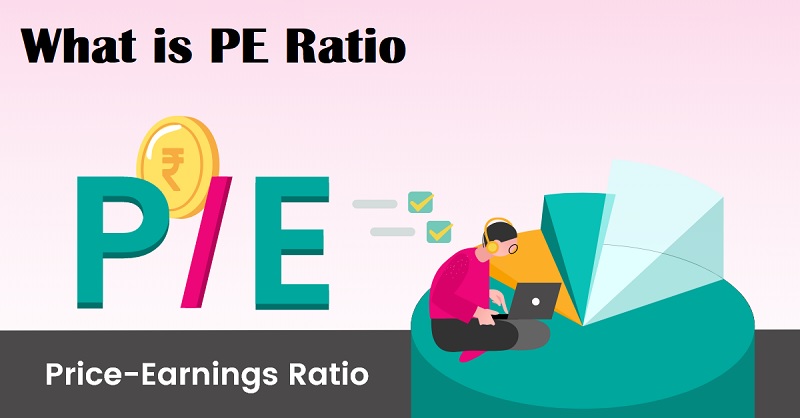One of the most used methods of valuing companies is the price-to-earnings ratio, commonly known as the P/E ratio or P/E multiple. The P/E ratio evaluates a company's current share price in relation to its annualized earnings per share (EPS).

It offers information on how pricey or inexpensive a stock is in comparison to the company's earnings. Everything you need to know about utilizing and interpreting the P/E ratio when assessing stocks will be covered in this article. Let us begin with knowing what is pe ratio.
Table of Contents
What is the Price-to-Earnings Ratio?
A stock's current market price per share is divided by its EPS for the last 12 months to get at the price-to-earnings ratio.
For instance, a firm with a share price of currency of 50 and 2 in EPS during the previous year would have a P/E ratio of 25 (50 / 2). The P/E ratio demonstrates how much money investors are ready to part with for every dollar of a company's profits.
Since investors are paying more per dollar of EPS, stocks with higher P/E ratios are more costly. Stocks with a lower P/E ratio tend to be more affordable overall.
Why the P/E Ratio Matters
The P/E ratio is useful for a few key reasons:
- It provides a standardized comparison of valuations across different stocks. High P/E multiples signal expensive stocks while low P/E signals cheap stocks.
- The P/E ratio incorporates future earnings expectations. Investors are willing to pay more for stocks they believe will grow profits quickly in the future.
- It gauges investor sentiment. A high P/E for a sector or the broader market may signal bullishness while low P/Es reflect bearishness.
- It helps identify potential overvalued or undervalued stocks relative to their earnings power.
Understanding valuation through metrics like the P/E ratio is crucial for making informed investment decisions. It adds an analytical, data-driven element to stock analysis.
What’s Considered a Good or Bad P/E Ratio?
It’s difficult to label a P/E ratio as universally good or bad. The appropriate ratio depends heavily on the company, industry, as well as market environment. Here are some general guidelines:
- High-growth stocks may warrant higher P/E ratios. Investors price in expectations of rapid earnings growth. A P/E of 40x or more is common for high-flying tech stocks.
- Stable, mature companies tend to have lower P/Es between 10-20x. Their growth outlook is steady rather than explosive.
- Cyclical companies like industrials as well as materials also tend to have lower P/Es during their downcycles. Their earnings fluctuate more with economic conditions.
- Very low P/Es under 10x can signal pessimism about a company’s profit outlook or unfavourable sector trends.
Comparing a stock's current P/E to its historical range as well as industry peers helps put its valuation in proper context.
Conclusion
A valuable valuation tool that contrasts a stock's price and earnings is the price-to-earnings ratio. Investors may learn if a stock is overpriced, undervalued, or reasonably priced based on its present and anticipated future profitability by examining a company's P/E in relation to its history, peers, as well as market expectations from a trading app of reputable company.
Making educated financial selections requires maintaining an understanding of P/E ratios.



Add a Comment